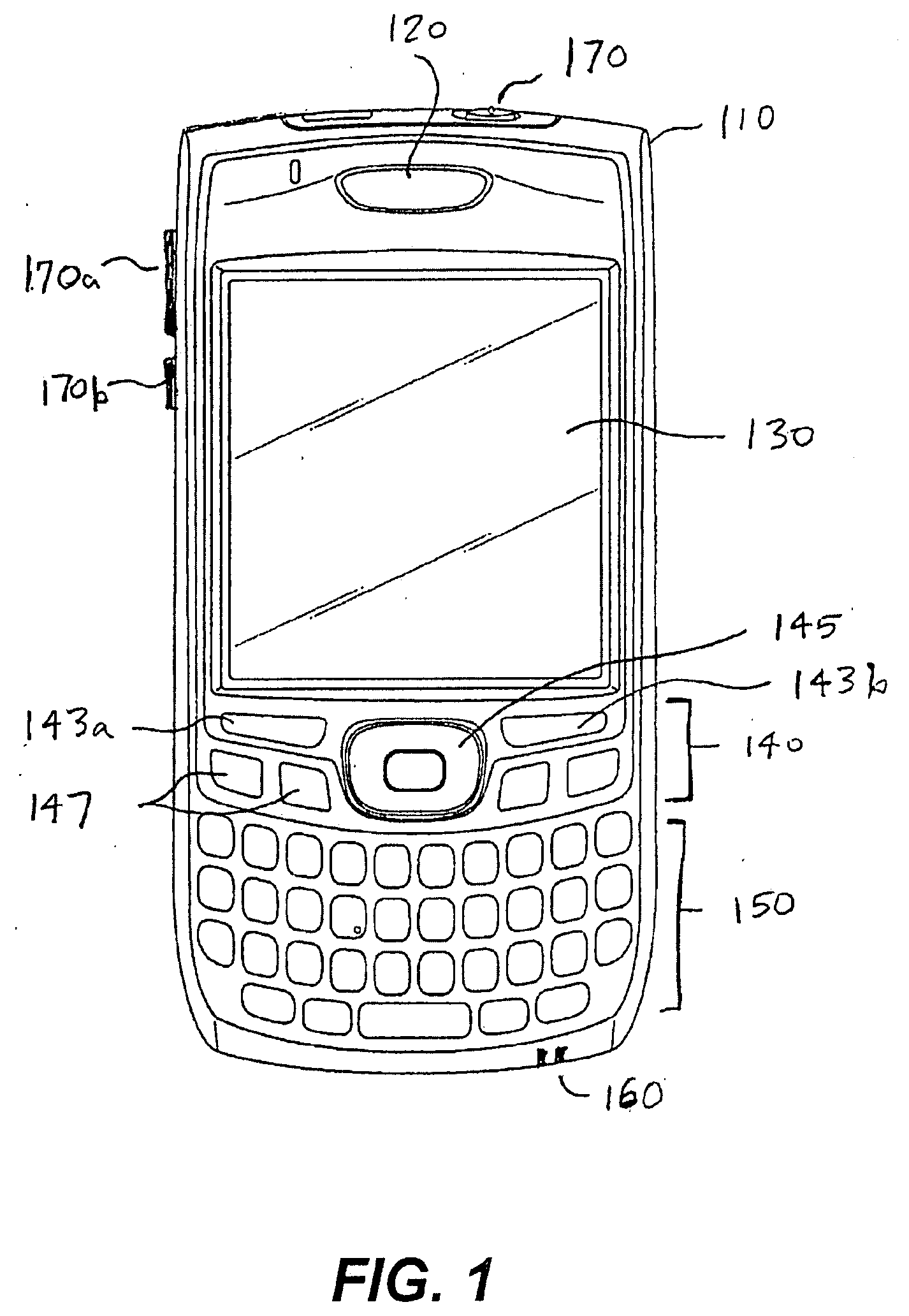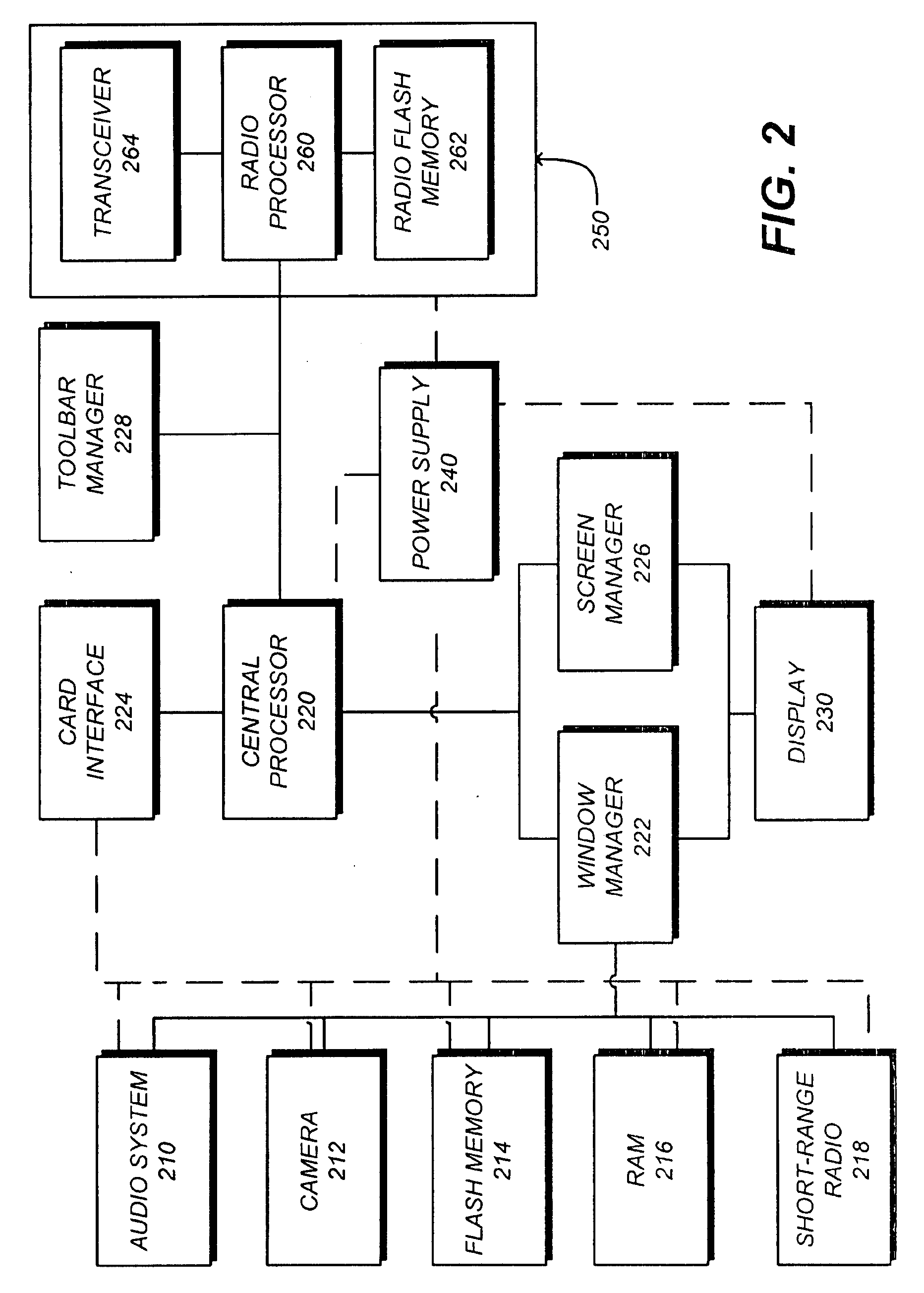Extendable Toolbar for Navigation and Execution of Operational Functions
a toolbar and operational technology, applied in the field of control mechanisms, can solve the problems of increasing the cognitive load of users, reducing the amount of available space on many portable devices, and not subduing the need for advanced interaction with such devices, so as to reduce the overall application size and complexity
- Summary
- Abstract
- Description
- Claims
- Application Information
AI Technical Summary
Benefits of technology
Problems solved by technology
Method used
Image
Examples
example toolbar
CONFIGURATIONS
[0039]FIGS. 3a to 3c illustrates one embodiment of toolbar configuration for a mobile computing device. In the illustrated embodiment, three example toolbars 310a, 320a, 330b are illustrated. The illustrated example toolbars 310a, 320a, 330b are part of a toolbar set can be retrieved by the toolbar manager 228 to associate with a media application when the media application is executed by the processor 220 of the mobile computing device 110. Also illustrated are focus patterns 310b, 320b, 330b available through a navigation mechanism 145 corresponding to each toolbar 310a, 320a, 330a. The focus patterns 310b, 320b, 330b are illustrative of actions that can be taken based on how a user interacts with the navigation mechanism 145.
[0040]By way of example, the first toolbar 310 has three functions that are illustrated through the corresponding focus pattern 310b, 320b, 330b associated with a navigation mechanism: (1) play, which is activated by depressing (or triggering) a...
PUM
 Login to View More
Login to View More Abstract
Description
Claims
Application Information
 Login to View More
Login to View More - R&D
- Intellectual Property
- Life Sciences
- Materials
- Tech Scout
- Unparalleled Data Quality
- Higher Quality Content
- 60% Fewer Hallucinations
Browse by: Latest US Patents, China's latest patents, Technical Efficacy Thesaurus, Application Domain, Technology Topic, Popular Technical Reports.
© 2025 PatSnap. All rights reserved.Legal|Privacy policy|Modern Slavery Act Transparency Statement|Sitemap|About US| Contact US: help@patsnap.com



